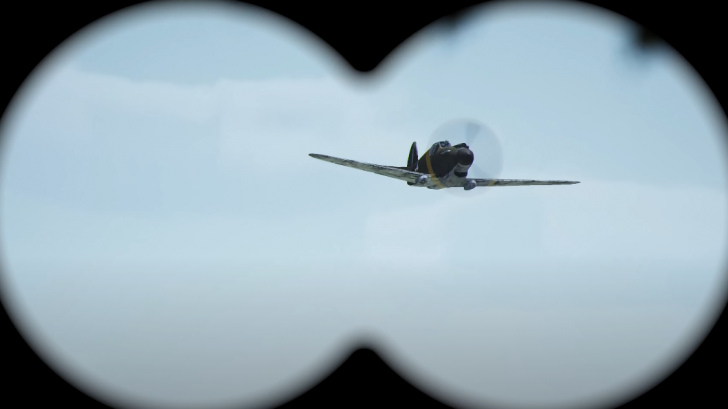It was a calm afternoon in Fujian, China, on December 8, 1942. A lookout scanned the skies and spotted an aircraft flying on the horizon, slowly approaching from occupied Taiwan.
Quick Response
The lookouts sounded the alarm, and pilots Robert Lee Scott and Johnny Hampshire of the Flying Tigers scrambled toward their P-40s.
Both men flew in formation and radioed the aircraft, but received no response. Regardless, they flew closer and realized that it was also a P-40 just like theirs. But unlike their P-40s, it had American markings that haven’t been used for almost a year.
Could it be an American P-40 captured by the Japanese?
Shocking Turn of Events
They shot over its wing to make sure the pilot was aware of their presence, but the P-40 did not react at all to the gunfire. Scott and Hampshire flew closer and closer until they saw how extremely damaged the aircraft was.
Its fuselage was riddled with bullet holes, and pieces of its wings were missing, yet it did have noticeable repairs with mismatched paint and bare metal in several places.
As they got a closer look at the canopy, they saw an unmoving pilot. The ghost plane then began slowing down and losing altitude as it ran out of fuel. It descended from the clouds and crashed into the rice field below, out of sight.
Investigating The Crash Site
Pieces of the plane were scattered all over the field, with the pilot dead inside the cockpit without any identifying information. Alongside the pilot was a diary, and there were letters inside his jacket. They grabbed them and quickly returned to base.
The letters were mailed, but the diary was surrendered to their superiors, where it was lost in the vast archives of the military.
Years Later
Years after the war had ended, writer Curt Norris mentioned this story at a veteran’s reunion. Suddenly, a man by the name of Milton McMullen stood up and claimed that he had helped build that airplane.
McMullen was a sergeant of the 701st Aviation Ordinance Squadron of the 19th Bomber Group stationed on the island of Mindanao, Philippines. His squadron was ordered to surrender to the Japanese – but he refused. McMullen and soldiers from the Philippines and the US instead formed a resistance group while hiding in the dense Mindanao forests.
McMullen’s Story
During this time, the group scavenged pieces from two P-40 wrecks. Over many weeks, they hauled the pieces all together, went to work, and somehow produced an operational aircraft.
The restored P-40 was stripped of anything non-essential. There were no armor, armaments, and barely any instruments – though they kept the nose machine guns just in case. It also had a makeshift 50-gallon underbelly fuel tank and a starboard landing gear made out of bamboo and scrap metal.
They planned to evacuate an important Philippine General to tell the tale of the many brave men that served alongside him. However, the General did not want to leave his men behind. Instead, one unidentified pilot decided to sneak in the P-40 one early morning and took off with the letters written by his fellow soldiers.
Unfortunately, the pilot ended up in occupied Taiwan by mistake. Japanese Zeros rained bullets on the P-40 before he could escape. He would later crash 1,300 miles away from Mindanao. Meanwhile, Milton and the others were captured and taken to a POW camp a few weeks after the flight, never knowing what happened to their P-40.



